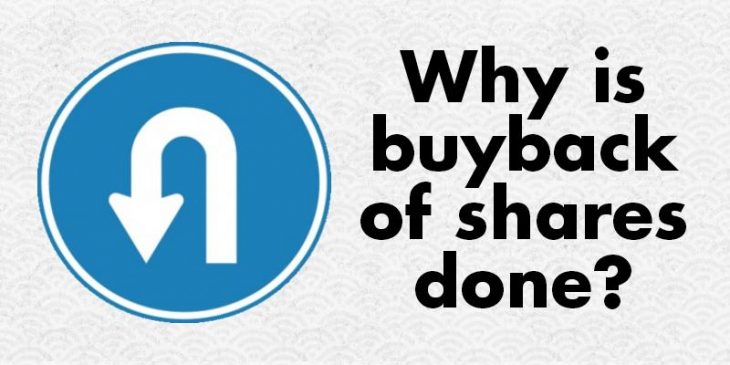
What’s a buyback?
A buyback is a scheme by which a company repurchases a certain amount of its outstanding shares. Once taken back, these shares are extinguished by the company. Typically, companies that have excess cash in their kitty, with no specific investment or other deployment requirements for the same, may consider buybacks. Reducing the number of shares in this case helps in improving the earnings per share for continuing shareholders and perks up the return on equity. Buyback of share from the public can also be done if promoters want to hike their stake in the company, sometimes to avoid any takeover threats.
Buybacks can be done either through the tender offer route or through open market purchases. In the former, the company fixes a buyback price and accepts shares on a proportionate basis during the buyback period. Shareholders will be sent a letter of offer; a form is to be filled in with the necessary details and sent back to the company accompanied by the required documents. Promoters are allowed to tender their shares in this route. Under open market purchases, the company specifies a maximum price and buys back shares from the market during a defined time period. Promoters cannot take part in this route.
The decision of a shareholder to participate in a buyback is based on a number of variables specific to the stock — such as the buyback price, the number of shares that can be sold and the prospects for a company. Investors need to take note of three factors before they take the plunge.
Acceptance ratio
When a buyback (tender offer) is announced at what you think is an attractive price to exit the stock or book some profits, the ‘acceptance ratio’ plays a role in deciding how much of your holdings you can actually sell. With ₹16,000 crore, TCS is proposing to buy back 5.61 crore shares at ₹2,850 per share (market price of ₹2,506 as on date of announcement) on a proportionate basis. This accounts for roughly 10 per cent of the 52.55 crore shares held by the public, implying that only about 10 in every 100 shares could possibly be accepted under the buyback scheme from the public.
In practice, not all shareholders tender and even those who do, may not part with their entire holdings. Actual acceptance may be higher. Reservation for small shareholders can better the acceptance for such investors too. SEBI has mandated a reservation of 15 per cent of the buyback offer for retail investors with holding of up to ₹2 lakh (market value as on record date).
Acceptance remains a bit of a wild card factor. But if you fall within the definition of a small shareholder and find the buyback price attractive enough to tender, you may not get a raw deal after all.
Open market nuances
When companies decide to take the open market route to buyback, investors need to take into account a few things. One, although the company may declare a maximum buyback price, it does not mean that the investors who sell during the buyback period will realize that maximum price. The company could actually buy in several tranches and at different prices and the entire process is executed like any other buy/sell transactions in a market. It is also possible that they may not use the entire amount set aside for the buyback.
A 2013 SEBI regulation makes it mandatory to use at least half the amount originally intended for the buyback, subject to certain exceptions such as the stock price ( i.e. volume weighted average price) moving over the maximum buyback price during the buyback period.
In such cases, where share prices continue to remain higher than the maximum buyback price after the closure of buyback, it could make sense for shareholders to sell even after the buyback period.
Taking a call on whether to sell and when to sell in the open market based on a buyback announcement is not an easy decision. It rather boils down to what level of returns you are happy with and how long you want to stay invested.
Signal from buyback
Since the buyback price is usually set at a premium to the prevailing market price, a buyback announcement sends out a positive signal for the stock. Ideally, it denotes undervaluation of the stock and the management’s confidence in the company’s prospects. But in some cases, buyback becomes a tool to help keep the stock prices high, especially in volatile markets or when the company is faced with some headwinds. This is one of the reasons why buyback stocks tend to lose sheen over the medium to long term. It is very rare that stock prices, over the long term, have remained above the buyback price.
If you are a really long-term investor holding a stock with solid fundamentals, ignoring buyback offers may be the best way to retain multi-baggers.


